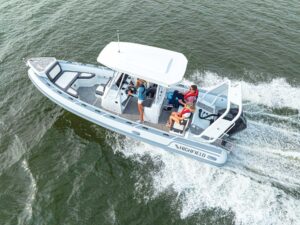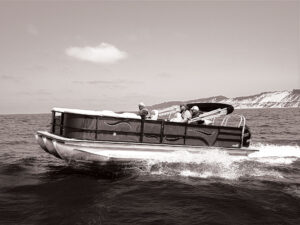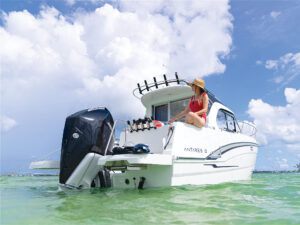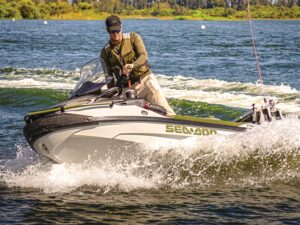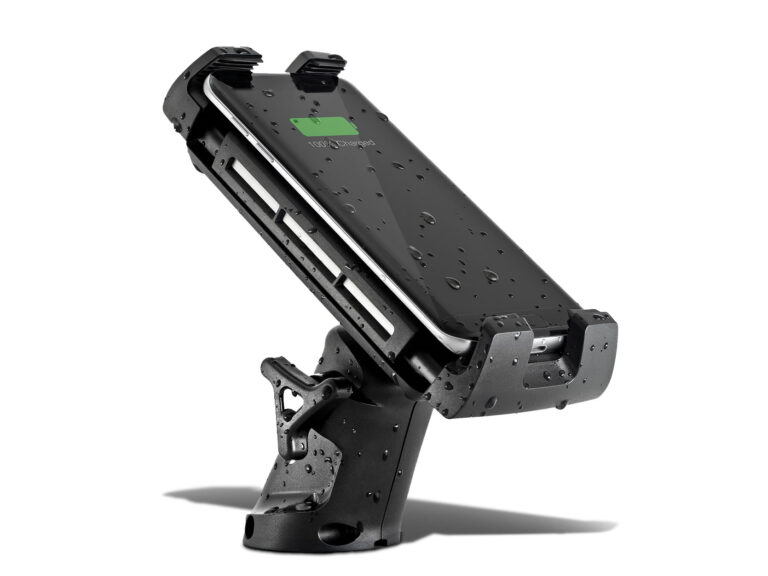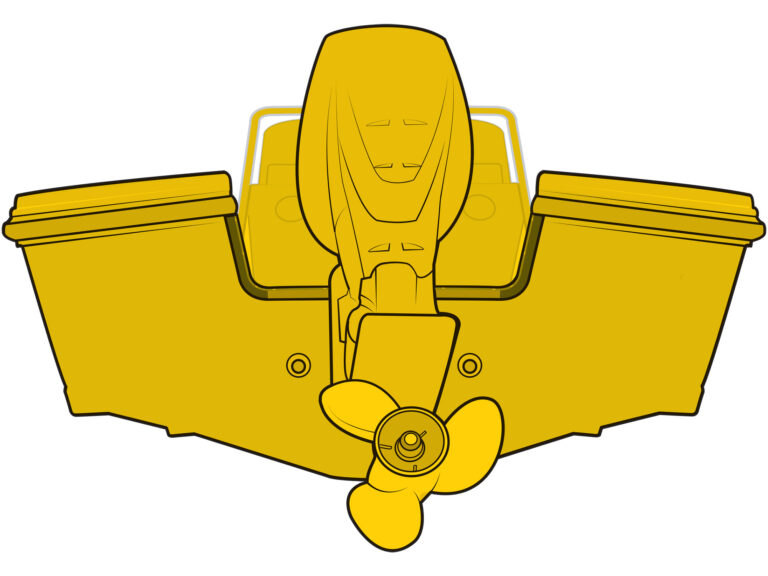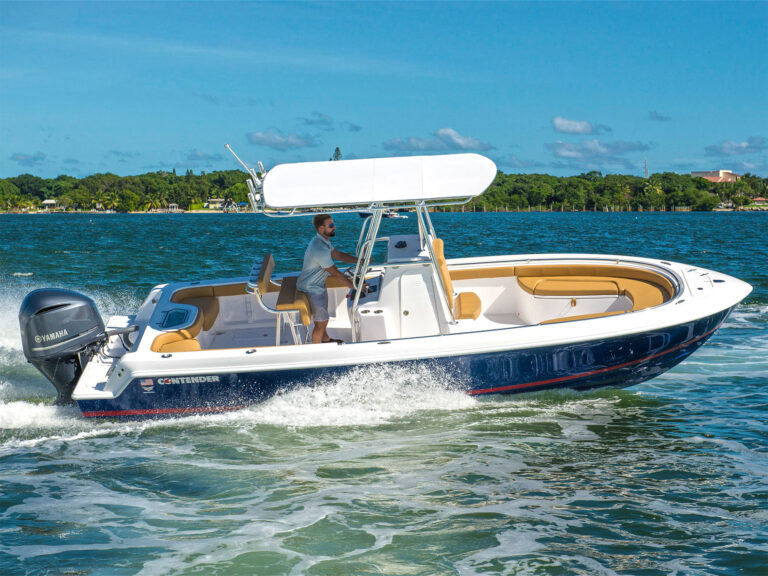The Marquis 40 SC has everything you’d want in a Euro-style express yacht. Sexy lines? Heather Locklear, eat your heart out. Impressive handling? Even when she was on Melrose Place, Heather wasn’t this smooth.
But the 40 SC stands alone among production boats built in the United States, carrying a Class A rating according to guidelines established by the European Directive for Recreational Craft.
Class A is a big deal because a boat must be built to withstand Force 8 (40-knot) winds and 13′ seas. Among the multitude of construction requirements to meet Class A are that stringers can’t be more than 1’2″ apart and that only a limited number of through-hulls can be used.
To meet those requirements, the 40 SC is built with sectional liners for the cabin decking and the salon. The hull bottom is solid fiberglass whereas the sides are cored with closed-cell foam below the waterline and balsa above. Stringers are molded fiberglass and those in the engine compartment are cored with foam. The deck is reinforced with 1¾” aluminum tubing that’s inset with balsa to provide strength. When the hull and deck are put together, the joint is bonded with fiberglass.
The strength was evident during my flinch-free ride on test day. The 40 SC hit 35.3 mph at wide open and cruised at 26.9 mph at 3000 rpm. As we’ve come to expect from IPS-equipped boats, its handling rivaled skinny-beamed offshore go-fasts as the boat made quick S-turns and carved tight arcs in each direction.
By comparison, both the Fairline 44 Targa ($925,980 with the IPS 600s) and the Cranchi 43 HT ($653,389 with the test engines) carry Class B ratings. The Cranchi is faster at 43 mph and its construction features molded stringers with Kevlar reinforcement. Fairline builds its boat with an interior liner, and the hull and deck are bonded together. Its top speed is also estimated at more than 40 mph.
**Meat Locker
**
****Engine access in the 40 SC is excellent, thanks in part to the space-saving design of the IPS drives. The cockpit hatch opens to full vertical position on gas struts, and there’s a hanger where you can stash the ladder. There’s diamond-plate decking on walking surfaces, and the engines are dressed up with custom Marquis emblems.
For a 40′ boat, there’s good space between the engines, and you can easily get to all the steering accessories, trim tab lines, and other items on the transom. My lone gripe about the rigging is that the fuel lines weren’t installed with twin hose clamps, which are more secure. The water lines, however, were double-clamped.
When you emerge from checking the engines, relax in the cockpit. A highlight is the extendable aft lounge and table. With the press of a button, the whole structure moves aft 1’5″, instantly making the area feel like the cockpit on a 43- or 44-footer.
Side passageways offer easy access to the bow, and once you’re out there you can tend to the lines or windlass. You can also open the front section of the foredeck cushion and the deck hatch underneath to get into the master stateroom. The cushion snaps to the hatch, but it’s an awkward process. The primary piece of the cushion secures with a better track-and-bead system.
Dine In Style
****Once the anchor is secure, join the party in the salon. I liked the bi-fold door that created an open feel from the helm to the transom.
Forward to port, the galley has all the appliances-with a faux stainless-steel look-you need to whip up a meal, and there’s some good stowage in lockers and a pull-out drawer. The countertop and lockers should have fiddle rails to retain spills and contents.
When I drove the 40 SC, all the instruments and electronics were in clear view. Marquis was smart to put the controls to starboard and the IPS joystick to port. This keeps people from hitting one when trying to work the other. Forward visibility was compromised, though. I was straining most of the time to look over the foredeck cushion, but I couldn’t stand up to drive without hitting my head.
Stairs alongside the helm lead down into the 40 SC’s belowdecks area. The stairs open up to provide cavernous stowage in an area that’s more than 6′ long and 1’8″ high. It’s a great use of this space.
To starboard, the kids can snooze or watch a DVD from twin berths. You’d better like watching from a prone position, though, because headroom is only 2’4″ from the mattress to the top of the cabin. There’s a good hanging locker and locker underneath.
Forward, the master stateroom is a great combination of comfort and practicality. The queen berth opens on twin gas struts (they weren’t strong enough to hold it up), and there are two drawers in the base.
The single head has a standup shower, though I’d like to see more than a ½” gap at the top to help release steam. If the water gets rough, you can grab a towel rod to keep from stumbling. And you’ll be glad to know the 40 SC is built to take it.
Extra Point: It seems that every builder of express boats is dressing them in colors, especially bright red, and then charging extra for their finery. Not Marquis. The 40 SC’s bright hullsides come standard.

